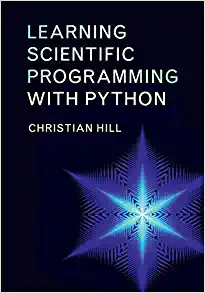Question
Objectives: Measuring force and extension of spring from simulation Finding K (spring constant) from graph Apply Hooke's law to solve problems Elastic potential energy Theory:
Objectives:
- Measuring force and extension of spring from simulation
- Finding K (spring constant) from graph
- Apply Hooke's law to solve problems
- Elastic potential energy
Theory:
- Hooke's law states that: force is directly proportional to the extension of spring,
F=kx.Where:
= stretching force applied to the spring
= spring constant
= extension of the spring
- F=kx, is an equation for a straight line where k is the slope of force vs extension graph.
- The work done by F (Elastic potential energy) is equal to U =.
Where:
U= elastic energy
k= spring constant
x= extension of the spring
Procedure:
Part 1:
- Go to the simulationhttps://phet.colorado.edu/sims/html/hookes-law/latest/hookes-law_en.html.
- Choose the first option (intro)
- Start filling the table provided down below. Do not change the spring constant value, set it as k= 500 N/m throughout the experiment.
- Keep increasing the force by 20N each time.
- Calculate the extension of spring using the data recorded in the table.
- Calculate the Elastic energy.
- Go to Excel, create a force vs extension of spring graph from the table you filled.
- Find the spring constant from the graph (slope).
- Find the percentage error of the spring constant (real value = 500 N/m), (the expected value is the slope of the graph).
Part 2:
- Questions related to k (spring constant)
Part 3:
- Solve questions on Elastic energy.
Part 1
- Fill the table below:
k=500 N /m | ||
Force (N)( y-axis ) | Extension(m)(x-axis) | Elastic energy |
20 N | ||
Paste the graph:
- Slope (k exp) =
- Spring constant (k real) =
- Percentage error %=
Part 2
- When increasing the spring constant (k) what do you notice:
..............................................................................................................................................................................................................................
- When decreasing the spring constant (k) what do you notice:
..............................................................................................................................................................................................................................
- Explain why the formula (F=-kx) is negative in some cases?
..............................................................................................................................................................................................................................
- A horizontal spring has a spring constant of 80.0 N/m. What force must be applied to the spring to compress it by 4.0 cm?
..............................................................................................................................................................................................................................
- A spring is stretched 0.50 m and the force was 30000 N. What is the spring constant?
..............................................................................................................................................................................................................................
Part 3
- A spring with a constant of76 N/mis extended by0.9 m. How much energy is stored in the extended spring?
..............................................................................................................................................................................................................................
- A toy rocket-launcher contains a spring with a spring constant of 35 N/m. How much must the spring be compressed to store 1.5 J of energy?
..............................................................................................................................................................................................................................
- A box is connected to a spring is extended to 200mm, and it stored 3578J of energy. Find the force.
..............................................................................................................................................................................................................................
Conclusion:
........................................................................................................................................................................................................................................................................................................................................................................................................................................................................................................................................................................................................................................................................................................................................................................................................................................................................................................................
Step by Step Solution
There are 3 Steps involved in it
Step: 1

Get Instant Access to Expert-Tailored Solutions
See step-by-step solutions with expert insights and AI powered tools for academic success
Step: 2

Step: 3

Ace Your Homework with AI
Get the answers you need in no time with our AI-driven, step-by-step assistance
Get Started


